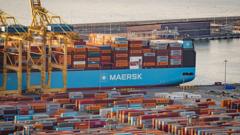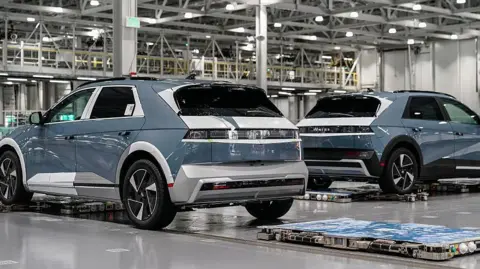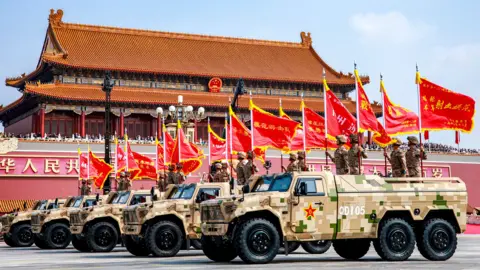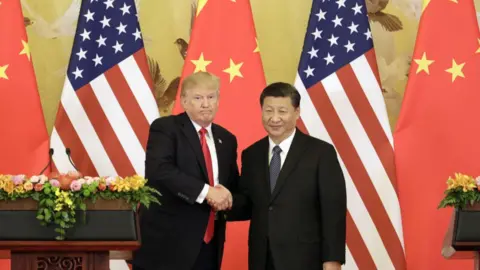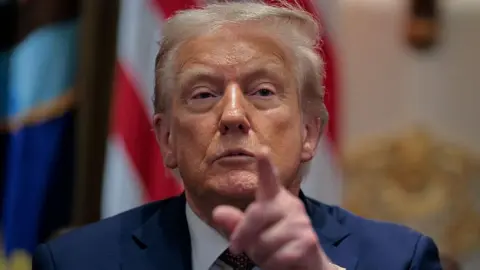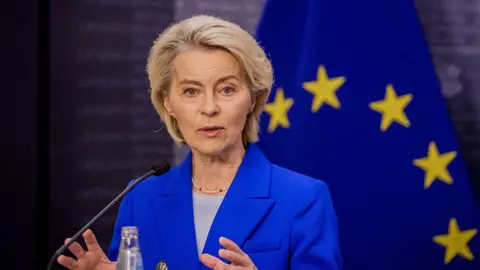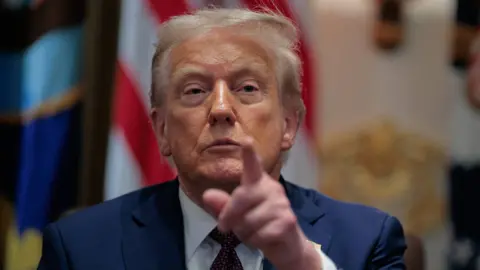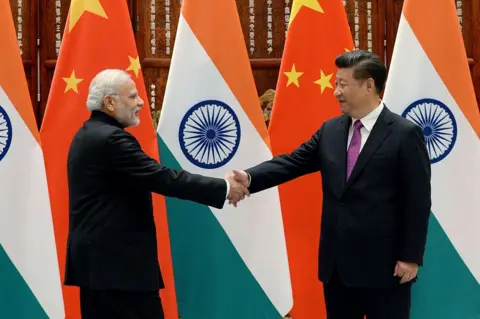After weeks of rigorous negotiations, the United States and the European Union have successfully inked a sweeping trade agreement, coinciding with upcoming tariff discussions with China. The deal materialized as a result of direct conversations between the leaders from Washington and Brussels, underscoring the importance of personal diplomacy in navigating complex trade matters.
Both sides are poised to claim victories through this agreement, with the EU potentially avoiding a harsher 30% tariff, ultimately settling at a more manageable 15%. For the US, this deal could translate into an estimated $90 billion in tariff revenue based on last year's trade patterns, alongside an influx of $600 billion in investments over time.
Nonetheless, the specifics surrounding the timing and sector allocation of these investments remain murky, leaving crucial queries unanswered. While leaders hail the agreement as a turning point in US-EU relations, the diligent work to reach this juncture was a testament to each entity's resolve, particularly against the backdrop of tight deadlines.
In his typical fashion, President Trump emphasizes the monumental nature of this deal, amid longstanding grievances about the trade imbalance favoring the EU – a documented $236 billion deficit last year. The US President often frames the deficit as an erosion of American wealth, while the nuances of international trade suggest a more intricate reality.
European Commission President Ursula von der Leyen has acknowledged the need for balance in trade, indicating a commitment to improving the existing relationship. As the US continues to renegotiate its trade approach globally, the agreement signifies an essential step forward, but the intricacies of actual execution remain vital.
Amidst these developments, further trade discussions are on the horizon, including high-stakes negotiations with China set to unfold shortly in Stockholm. As anticipation builds, optimism prevails about the possibility of a pause on escalating tariffs, although China's stance continues to be more rigid compared to other trading partners. Consequently, while the US and EU move forward, vigilance is warranted, as global trade dynamics may still face turbulence in the coming months.

